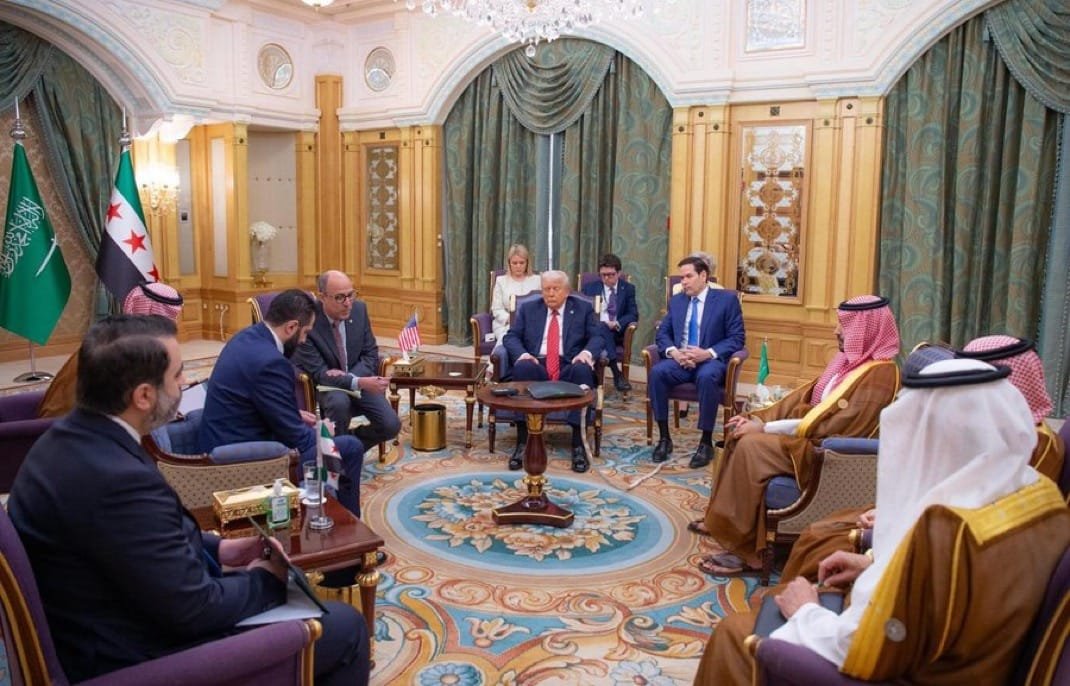
Introduction to Nuclear Weapons
Nuclear weapons have played a pivotal role in shaping the landscape of global politics and warfare since their inception in the mid-20th century. The first successful detonation of an atomic bomb during World War II marked a turning point not only in military strategy but also in international relations. Countries have since perceived these weapons as symbols of power and deterrence, significantly altering the dynamics of global security.
The development of nuclear arsenals has been driven by several factors. Primarily, nations have sought to establish a balance of power, ensuring that they are not vulnerable to attacks from others possessing similar capabilities. This notion of deterrence—that the possession of significant military assets can prevent adversaries from acting aggressively—has become a cornerstone in the strategy of states that hold nuclear weapons. Such arms are often regarded as a safeguard against potential threats, creating a complex environment where the risk of conflict is balanced by the catastrophic consequences of nuclear warfare.
The Cold War era exemplified the interplay of nuclear armament and international politics. With the United States and the Soviet Union engaged in an arms race, the accumulation of nuclear weapons served both as a deterrent and an instrument of influence. This period also underscored the urgency of arms control efforts, as the potential proliferation of nuclear capabilities to other nations raised significant concerns regarding global safety and stability. Today, several countries are known to possess nuclear arsenals, each influenced by historical, political, and strategic motivations that continue to evolve in the contemporary geopolitical landscape.
Now, as we navigate an increasingly complex world, the significance of nuclear weapons remains pivotal in discussions of global security and diplomatic relations, with ongoing dialogue about arms control and non-proliferation contributing to this critical discourse.
Current Global Nuclear Landscape
The global nuclear landscape has significantly evolved over the years, shaped by geopolitical tensions, arms control treaties, and international diplomacy. As of October 2023, it is estimated that nine countries possess nuclear weapons, with the total number of warheads exceeding 13,000 worldwide. The distribution of these nuclear arsenals varies considerably among these nations, raising critical considerations regarding global security and stability.
The United States stands at the forefront, holding approximately 3,750 nuclear warheads, followed closely by Russia, which possesses about 3,800 warheads. These two nations remain the largest nuclear powers, collectively accounting for more than 90% of the world’s nuclear weapons. Notably, both countries have engaged in discussions to reduce their arsenals through various treaties over the years, although tensions often hinder disarmament progress.
Other nations, such as China, France, and the United Kingdom also maintain significant nuclear capabilities. China is estimated to have around 320 warheads, while France and the UK possess approximately 290 and 225 atomic warheads, respectively. Yet, the global landscape is not solely defined by these established powers. Countries like India and Pakistan have developed their own nuclear arsenals, with estimates of around 160 and 170 warheads, respectively. Additionally, North Korea remains a point of contention, with its advanced nuclear program leading to speculation regarding the exact number of warheads at its disposal, believed to range between 40 and 50.
Overall, the map of global nuclear arsenals presents a complex picture of power dynamics, with nations vying for strategic advantages while navigating the perilous implications of nuclear weapons. These developments are essential for understanding which countries are leading in nuclear missiles and how they measure against each other in this critical aspect of international security.
Rankings of Nuclear-Armed States
The global landscape of nuclear armament is primarily dominated by a few key states, with the United States and Russia leading in terms of the sheer number of nuclear warheads. As of the latest estimates, the United States possesses approximately 5,800 nuclear warheads, while Russia holds a slightly larger stockpile of around 6,375. This significant difference underscores the ongoing strategic rivalry that continues to shape policy and military strategies in both nations.
In the context of strategic and tactical weapons, it is essential to differentiate between these categories as they serve various military purposes. Strategic nuclear weapons are designed for long-range delivery and are often deployed via intercontinental ballistic missiles (ICBMs) and heavy bombers. In contrast, tactical nuclear weapons have shorter ranges and are intended for use on the battlefield, capable of being delivered by artillery or shorter-range missile systems. Both the United States and Russia maintain a variety of these arms, reflecting their respective defense postures and military doctrines.
Following these two nuclear giants, other countries also possess significant nuclear arsenals, including China, France, and the United Kingdom, each maintaining between 200 to 300 warheads. China, with its rapidly expanding arsenal, is viewed as a key player in the future dynamics of nuclear deterrence. Other states with nuclear capabilities, such as India, Pakistan, and Israel, contribute to the complexity of global nuclear strategy, holding smaller but still dangerous stockpiles that ignite concerns regarding regional stability and conflict.
As this intricate web of nuclear-armed states continues to evolve, it becomes increasingly crucial to understand the implications of their respective arsenals on global security. The interplay between these nations, characterized by arms control negotiations, modernization programs, and geopolitical tensions, poses significant challenges to the aspiration of nuclear disarmament. Analyzing the rankings of nuclear-capable states offers insights into the current state of international relations and the persistent threat posed by nuclear weapons.
The United States: History and Current Status
The history of the United States’ nuclear program began shortly before the Second World War, catalyzed by the discovery of nuclear fission. The Manhattan Project emerged as a monumental effort during the war, culminating in the first successful test of a nuclear weapon, codenamed Trinity, on July 16, 1945. Subsequently, the U.S. dropped atomic bombs on Hiroshima and Nagasaki in August 1945, demonstrating the devastating power of nuclear weapons. These events marked the United States as the first nation to wield nuclear capabilities, significantly shaping global military and political dynamics.
As the Cold War intensified, the U.S. expanded its nuclear arsenal significantly in an arms race with the Soviet Union. Throughout the 1950s and 1960s, the nation developed a range of delivery systems, including intercontinental ballistic missiles (ICBMs) and submarine-launched ballistic missiles (SLBMs), enhancing its deterrence posture. By the early 1960s, the U.S. had amassed a stockpile of approximately 31,000 nuclear warheads, the peak of its nuclear capability. However, the threat of nuclear proliferation prompted a series of arms control agreements, such as the Nuclear Non-Proliferation Treaty (NPT) in 1968, aimed at curbing the nuclear arms race.
In recent years, the United States has focused on modernization rather than expansion of its nuclear arsenal. As of 2023, estimates suggest the U.S. maintains around 5,800 nuclear warheads, with approximately 1,750 classified as deployed. The current modernization efforts involve upgrades to delivery systems, warhead life extensions, and the development of new technologies to ensure national security. Additionally, concerns over emerging nuclear capabilities from other nations have led the U.S. to reassess its nuclear strategy continuously. The United States remains committed to maintaining a credible nuclear deterrent while pursuing diplomacy to mitigate global nuclear threats.
Russia: The Titan of Nuclear Weapons
As of 2023, Russia is recognized as possessing the largest nuclear arsenal in the world, a distinction that bears significant implications for global security dynamics. The origins of Russia’s formidable nuclear capabilities can be traced back to the Cold War era when the Soviet Union embarked on an extensive nuclear weapons program in response to perceived threats from the United States and its allies. This historical context laid the groundwork for a complex and robust nuclear stockpile that has continued to evolve over subsequent decades.
Strategically, nuclear weapons serve as a cornerstone of Russia’s national defense policy. The doctrine of nuclear deterrence emphasizes the role these weapons play in deterring aggression from both state and non-state actors. The belief is that a credible threat of massive retaliation can maintain peace and stability, particularly in a multipolar world where various regional conflicts pose a constant risk. In light of this, Russia maintains a diverse arsenal that includes intercontinental ballistic missiles (ICBMs), submarine-launched ballistic missiles (SLBMs), and various tactical nuclear weapons designed for specific battlefield utility.
In recent years, Russia has also demonstrated a commitment to modernizing its nuclear forces, ensuring that its arsenal remains both relevant and technologically advanced. This includes the development of advanced delivery systems equipped with multiple independently targetable reentry vehicles (MIRVs) and hypersonic glide vehicles, which are characterized by their speed and maneuverability, making them more challenging to intercept. Additionally, ongoing geopolitical tensions have prompted Russia to further prioritize its nuclear program in response to NATO’s expansion and military exercises near its borders.
Overall, the evolution of Russia’s nuclear capabilities illustrates a complex historical trajectory shaped by global political climates, strategic imperatives, and technological advancements. As the country with the largest nuclear stockpile, Russia’s approach to nuclear weapons will continue to be a focal point in discussions surrounding international security and arms control.
Other Notable Nuclear Powers
While the United States and Russia hold the largest nuclear arsenals in the world, several other nations possess significant nuclear capabilities, impacting global nuclear dynamics. China, for instance, has been steadily modernizing its nuclear forces and is estimated to maintain around 320 nuclear warheads. The Chinese government emphasizes a policy of minimum deterrence, with its nuclear strategy aimed at discouraging adversaries rather than pursuing large-scale nuclear dominance.
France and the United Kingdom are two key players in Europe with substantial nuclear arsenals. France, with approximately 290 nuclear warheads, advocates for nuclear deterrence as essential for national security. The French nuclear policy reflects a commitment to an independent and credible deterrent force. Similarly, the United Kingdom maintains a smaller but sophisticated arsenal of about 225 nuclear warheads. The UK’s strategic deterrent is primarily sea-based, relying on the Trident missile system aboard its Vanguard-class submarines.
India and Pakistan, two nations in South Asia, have developed nuclear weapons primarily as a means of deterrence against each other. India possesses around 160 nuclear warheads and adopts a no-first-use policy, indicating that it will only use nuclear weapons in response to a nuclear attack. Conversely, Pakistan’s nuclear stockpile, estimated at about 170 warheads, is centered on countering Indian capabilities, with a strategic stance suggesting a readiness to employ these weapons in case of a conventional conflict.
Finally, North Korea, with its rapidly evolving nuclear program, remains a significant concern on the global stage. Estimates suggest that North Korea has between 40 to 50 nuclear warheads, alongside a burgeoning ballistic missile technology. The regime’s nuclear ambitions pose challenges for international diplomacy and efforts to mitigate nuclear proliferation.
The Role of International Treaties
The proliferation of nuclear weapons has been a pressing global concern since the inception of nuclear technology. In response, several international treaties have been established to regulate nuclear armaments, with the Treaty on the Non-Proliferation of Nuclear Weapons (NPT) and the Strategic Arms Reduction Treaty (START) being among the most significant. These agreements are designed not only to control the spread of nuclear weapons but also to facilitate disarmament and promote peaceful uses of nuclear energy.
The NPT, which opened for signature in 1968, represents a landmark framework aimed at preventing the further spread of nuclear weapons. It has three principal objectives: to prevent the proliferation of nuclear weapons and nuclear weapon capabilities, to promote cooperation in the peaceful use of nuclear energy, and to pursue nuclear disarmament. The treaty categorizes countries into nuclear-weapon states and non-nuclear-weapon states. The former agrees to work towards disarmament while the latter commits to abstaining from developing or acquiring nuclear weapons. This classification has significant implications in international relations, particularly regarding accountability and trust among nations.
The START agreements, first signed in 1991 and renewed in subsequent years, focus on reducing the number of deployed strategic nuclear weapons. These treaties outline specific limitations on the arsenal sizes of the United States and Russia—the two nations possessing the largest nuclear stockpiles. The implementation of START has led to substantial reductions in their arsenals, fostering a climate of strategic stability and encouraging further dialogue on disarmament. By promoting transparency and confidence-building measures, these treaties play a crucial role in mitigating global nuclear tensions.
Collectively, such international treaties have been instrumental in shaping the nuclear landscape. They forge alliances and encourage cooperation among nations while establishing a legal framework within which nuclear governance can evolve. Through their continued enforcement and adaptation, these treaties remain essential in the pursuit of a world with diminished nuclear threats.
Nuclear Weapons and Global Security
Nuclear weapons play a pivotal role in shaping global security dynamics. Their existence has led to a delicate balance of power among nations, particularly among countries with robust nuclear arsenals. This balance facilitates a deterrent effect, where the possession of nuclear arms is theorized to prevent acts of aggression. The rationale behind nuclear deterrence is based on the principle that the potential consequences of a nuclear conflict would be catastrophic, thereby discouraging states from initiating military engagements against nuclear-armed adversaries. Consequently, the presence of these weapons can stabilize international relations to a certain extent, as nations may be less willing to engage in open warfare.
However, the proliferation of nuclear weapons presents significant challenges for global security. As more nations seek to acquire nuclear capabilities, the risk of miscalculations or accidental launches increases. Moreover, the spread of nuclear technology raises the specter of nuclear terrorism, wherein non-state actors might gain access to nuclear materials and technology, posing dire threats. The potential for “rogue states” to develop or acquire nuclear capabilities adds another layer of complexity, as these states may not adhere to established norms of international conduct.
Additionally, ongoing geopolitical tensions complicate the security landscape. Regions with volatile political climates, such as the Korean Peninsula or the Middle East, are particularly concerning due to the interplay of local conflicts and nuclear ambitions. These factors necessitate robust international dialogue and cooperation to mitigate the risks associated with nuclear proliferation. Furthermore, arms control treaties, such as the Treaty on the Non-Proliferation of Nuclear Weapons (NPT), play a crucial role in fostering global security, by promoting disarmament efforts and preventing the spread of nuclear weapons. Nevertheless, the effectiveness of such agreements is often challenged by geopolitical rivalries and differing national interests.
Conclusion: The Future of Nuclear Weapons
The future of nuclear weapons in international relations remains a critical issue that shapes global security dynamics. As several nations maintain extensive nuclear arsenals, the importance of disarmament efforts cannot be overstated. The contemporary discourse surrounding nuclear arms revolves around the balance between national security interests and the imperative for international peace. Although treaties like the Treaty on the Non-Proliferation of Nuclear Weapons (NPT) established frameworks aimed at reducing the proliferation of nuclear arms, the commitment to genuine disarmament has been inconsistent among nuclear-armed states.
In this context, the potential resurgence of arms races poses a significant threat. As geopolitical tensions escalate and technological advancements enable new forms of warfare, nations may reconsider their nuclear strategies. This situation could lead to an increased emphasis on enhancing nuclear capabilities rather than pursuing disarmament. Therefore, it is crucial for the international community to address these challenges through diplomatic negotiations, fostering an environment conducive to reducing nuclear stockpiles and preventing the development of new weapon systems.
Furthermore, cooperative frameworks must be reinforced to facilitate dialogue among nuclear and non-nuclear states alike. Engagement in constructive discussions can pave the way for mutual understanding and lead to reciprocal reductions in arsenals. The involvement of international organizations, civil society, and non-governmental entities can also enhance transparency and accountability in nuclear disarmament efforts. Ultimately, the future of nuclear weapons will heavily depend on the commitment of global leaders to prioritize global security over nationalistic ambitions. By fostering collaboration and understanding, it may be possible to navigate the complexities of the nuclear age and work towards a more stable and peaceful future.






